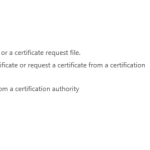Exchange 2013 SP1 deployment checklist
Leave a reply
Exchange 2013 SP1 was released on 2-24-14 and promises to resolve the frustrating Windows XP compatibility issues that affected both Outlook and Public Folders for XP users on Exchange 2013 CU3.
I have installed Exchange 2013 SP1 on one major customer so far and have had no issues thus far. Exchange 2013 SP1 is a major update to Exchange 2013 and requires changes to AD and the AD Schema.
It took me approximately 3-4 hours to upgrade two Exchange 2013 Servers from CU3 to SP1. Plan your maintenance Read more [...]
 Exchange 2013 includes a self signed SSL Certificate to facilitate SSL encryption. However, this self-signed cert is not recognized by web browsers and mobile devices and will cause security warnings and connection failures. The solution is to utilize an SSL certificate from a recognized third-party certificate provider (like GoDaddy, NameCheap, Etc). If you haven't purchased a new cert yet, here is my quick guide to dependable and cheap ssl certificates.
How to create a new certificate request
Exchange 2013 includes a self signed SSL Certificate to facilitate SSL encryption. However, this self-signed cert is not recognized by web browsers and mobile devices and will cause security warnings and connection failures. The solution is to utilize an SSL certificate from a recognized third-party certificate provider (like GoDaddy, NameCheap, Etc). If you haven't purchased a new cert yet, here is my quick guide to dependable and cheap ssl certificates.
How to create a new certificate request